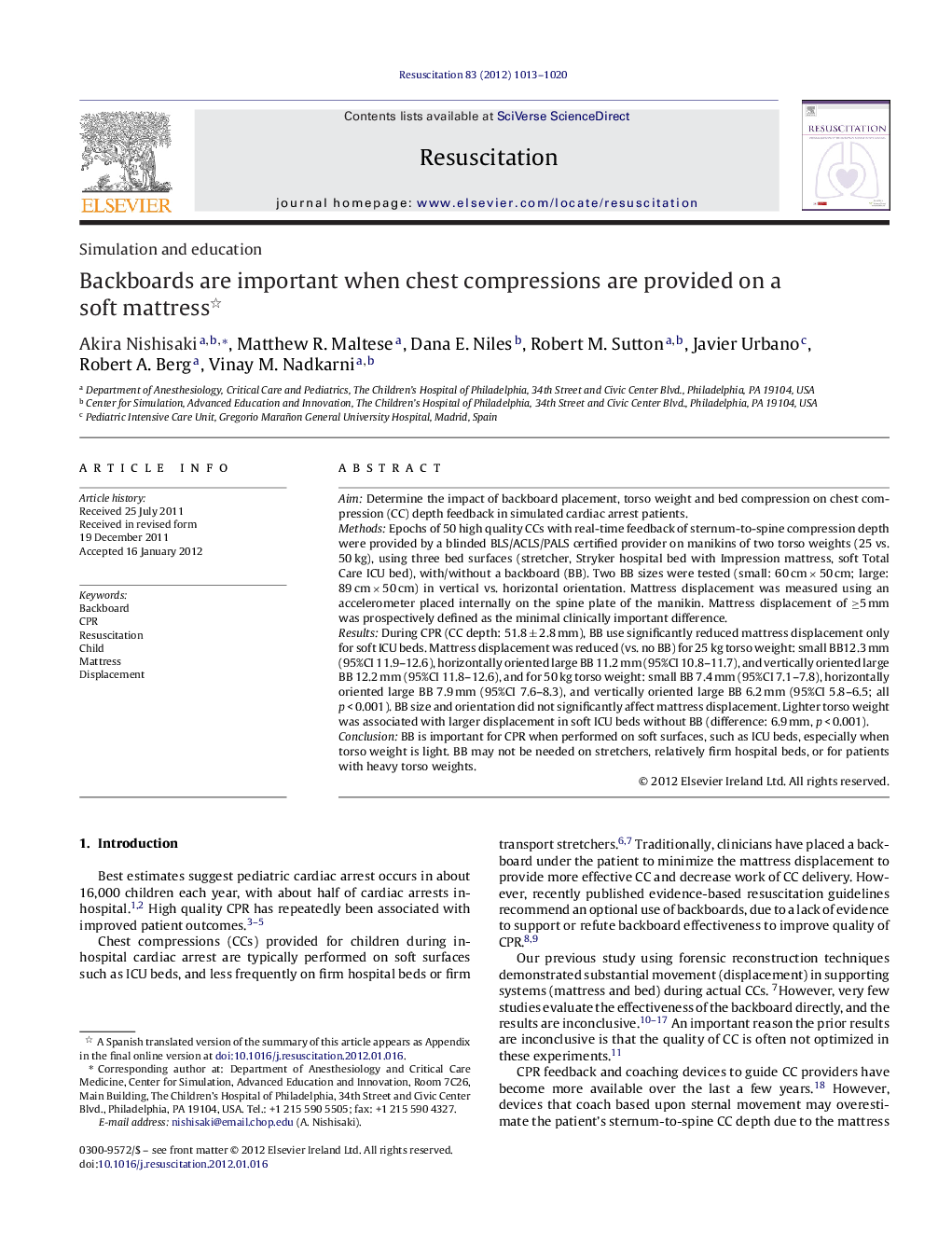| Article ID | Journal | Published Year | Pages | File Type |
|---|---|---|---|---|
| 3009020 | Resuscitation | 2012 | 8 Pages |
AimDetermine the impact of backboard placement, torso weight and bed compression on chest compression (CC) depth feedback in simulated cardiac arrest patients.MethodsEpochs of 50 high quality CCs with real-time feedback of sternum-to-spine compression depth were provided by a blinded BLS/ACLS/PALS certified provider on manikins of two torso weights (25 vs. 50 kg), using three bed surfaces (stretcher, Stryker hospital bed with Impression mattress, soft Total Care ICU bed), with/without a backboard (BB). Two BB sizes were tested (small: 60 cm × 50 cm; large: 89 cm × 50 cm) in vertical vs. horizontal orientation. Mattress displacement was measured using an accelerometer placed internally on the spine plate of the manikin. Mattress displacement of ≥5 mm was prospectively defined as the minimal clinically important difference.ResultsDuring CPR (CC depth: 51.8 ± 2.8 mm), BB use significantly reduced mattress displacement only for soft ICU beds. Mattress displacement was reduced (vs. no BB) for 25 kg torso weight: small BB12.3 mm (95%CI 11.9–12.6), horizontally oriented large BB 11.2 mm (95%CI 10.8–11.7), and vertically oriented large BB 12.2 mm (95%CI 11.8–12.6), and for 50 kg torso weight: small BB 7.4 mm (95%CI 7.1–7.8), horizontally oriented large BB 7.9 mm (95%CI 7.6–8.3), and vertically oriented large BB 6.2 mm (95%CI 5.8–6.5; all p < 0.001). BB size and orientation did not significantly affect mattress displacement. Lighter torso weight was associated with larger displacement in soft ICU beds without BB (difference: 6.9 mm, p < 0.001).ConclusionBB is important for CPR when performed on soft surfaces, such as ICU beds, especially when torso weight is light. BB may not be needed on stretchers, relatively firm hospital beds, or for patients with heavy torso weights.
